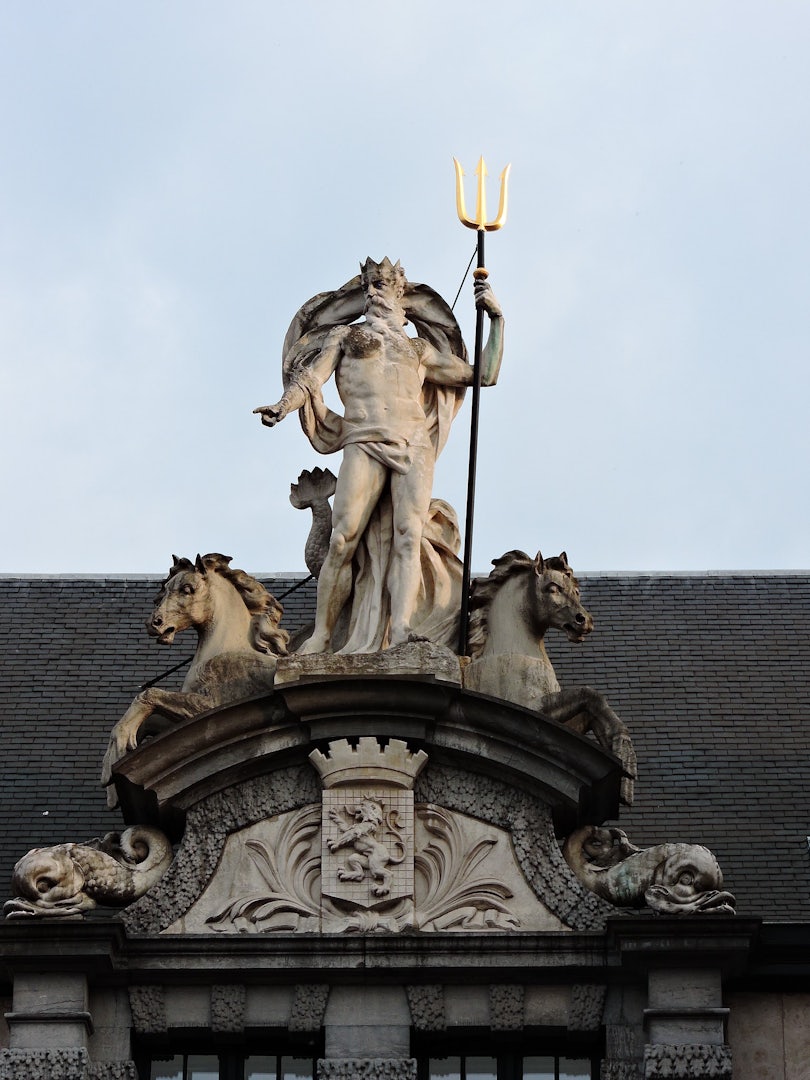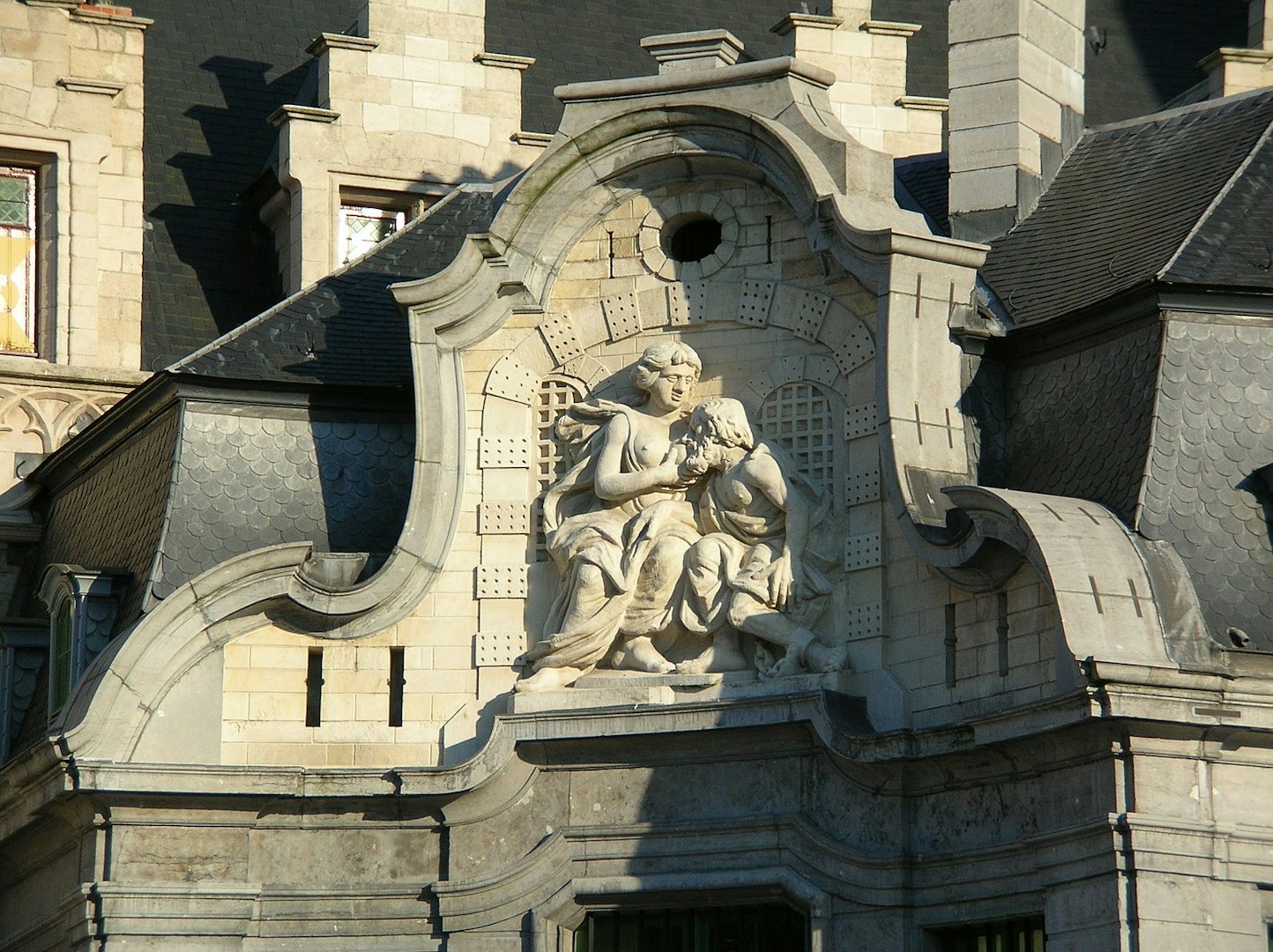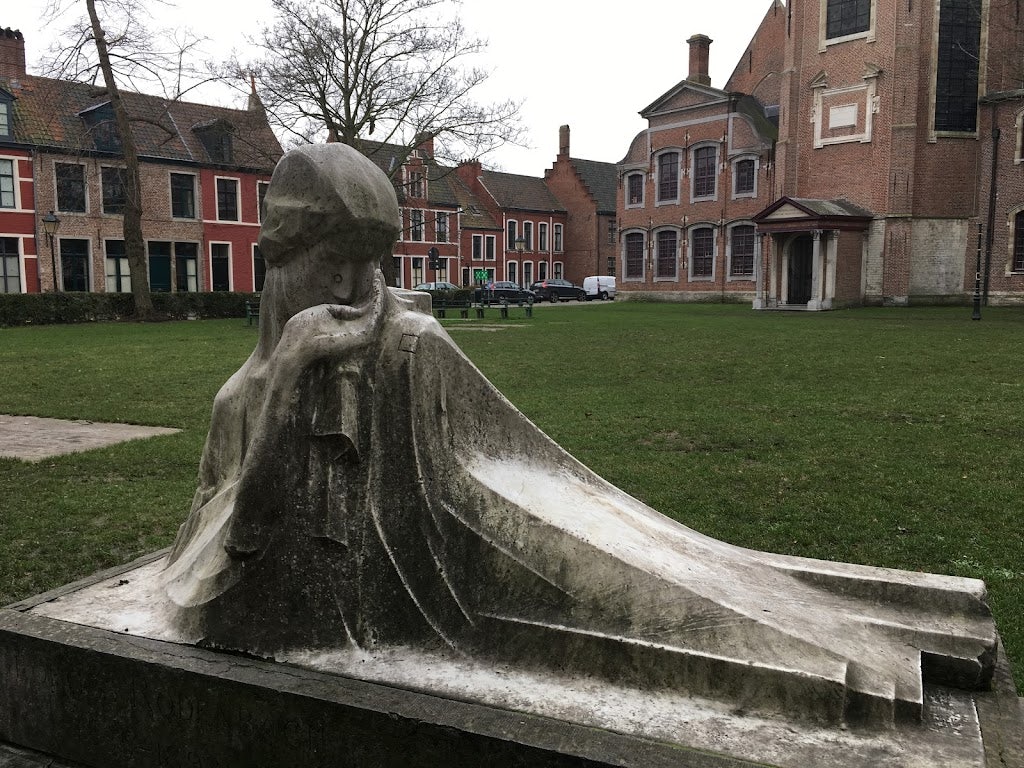5 mysterious sculptures in Ghent
1) The little girl with the knitting needles
Only a few people notice the little bronze statue of a girl with knitting needles on the corner of a house in the Patershol. It was created in 1976 by a French artist called Jean-Pierre Clemençon who incorporated some odd symbols including a broken column, a car wheel and a jam jar.

2) Neptune
The flamboyant 17th-century baroque gate that once led into the old fish market is surmounted by a splendid figure of Neptune surrounded by seahorses and dolphins. The two naked figures below the sea god represent the rivers that meet in Ghent. The man on the left holding a sail symbolises the Leie, while the woman on the right with a catch of fish stands for the far more important Scheldt.

More hidden secrets of Ghent?
This guide takes you to hundred of hidden gems and lesser-known places in Ghent, allowing you to explore the city off the beaten track.
3) Diving lady
A bronze statue of a diving woman stands on a balcony overlooking the River Leie. Created by the British artist Ronald Cameron, it was acquired by a local collector. A bronze statue of a diving man stands on the roof of a building on the opposite side of the river.

4) De Mammelokker
Look out for the strange carved stone relief above the entrance to a small 18th-century building, formerly a prison, at the foot of the Belfry. Known as De Mammelokker (literally ‘the breast suckler’), the sculpture illustrates the old Roman legend in which a man called Cimon was being starved to death in prison when his daughter Pero visited him and fed him from her breast. You can now buy a local beer called Mammelokker.

5) Bruges-La-Morte
A strange Symbolist figure of a woman was carved by the sculptor George Minne in 1903 to commemorate Georges Rodenbach’s 1892 novel Bruges-la-Morte. It was originally intended to stand in front of the Begijnhof in Bruges, but the city didn’t agree and so Bruges-la-Morte ended up outside the old St.-Elisabeth Begijnhof in Ghent.

More hidden secrets of Ghent?
This guide takes you to hundred of hidden gems and lesser-known places in Ghent, allowing you to explore the city off the beaten track.
JOIN THE HIDDEN SECRETS SOCIETY
Unlock a world of hidden gems. Sign up for free and gain access to over 4,000 addresses on our website. Plus, enjoy a 10% discount on all print guides and ebooks. Start exploring today!
Already a member? Log in. |
New here? Sign up. |